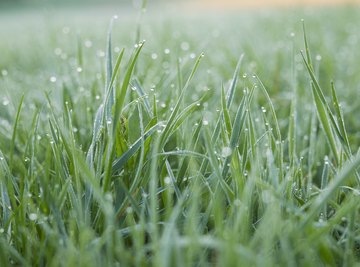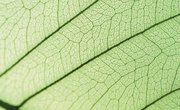
What is grass in a food chain – is grass a producer or a consumer? Grass belongs to the plant kingdom, which means that it can make its own food through the process of photosynthesis. Any organism that can make its own food with energy from the sun, carbon dioxide and water is called an autotroph, which is also known as a primary producer. Therefore, grass is a producer, and so are trees, bushes, flowers and all other members of the plant kingdom.
Food Web Members
Every living organism on the planet belongs to a food web. Food webs illustrate the relationships between different species, and food webs are composed of many interconnected food chains.
Food chains and food webs help us understand who eats what, which is connected to the flow of energy and movement of matter in an ecosystem. Food chains move in a linear direction, while food webs are more complex and show the complicated relationships each species in an ecosystem has.
A simple food chain begins with a producer, like grass. Grass makes its own food, turning sunlight into sugars through photosynthesis. Herbivores like rabbits come next in the food chain, as they must rely on other organisms to make food for them. This makes rabbits primary consumers, as they are herbivores, which are animals that eat plants. The food chain continues on, with secondary consumers eating primary consumers, then decomposers feeding on the members of the food chain after they die.
Producers and Consumers
Because the answer to the question 'Is grass an autotroph?' is yes, this tells us that grass is a producer. Any organism that can make its own food is an autotroph and a producer, and this includes all grasses, trees, vegetables, fruits, ferns, mosses, algae, phytoplankton and some types of bacteria.
Essentially, producers are food sources for consumers. Primary consumers are the organisms that eat producers, which are animals and insects that consume plants. Herbivores like rabbits, cows, deer, mice, spiders, grasshoppers and slugs are examples of primary consumers.
Next comes the secondary consumers, which are carnivores and omnivores that eat the primary consumers. Examples of secondary consumers are foxes, bears, bobcats and omnivorous humans. (As a side note, humans that follow a vegan diet do not eat any animal products, so they are herbivores, making them primary consumers rather than secondary consumers.)
Tertiary consumers are carnivores like owls, lions and eagles. These consumers eat animals that eat other animals.
Of course, no living being lives forever, and there are organisms that consume the energy from decaying bodies too. These consumers are called decomposers, and this category includes organisms like worms, fungi and bacteria. Decomposers essentially recycle the energy contained in dead plant and animal material, returning nutrients to the soil to feed the producers at the beginning of the food chain.
Food Webs Recycle Matter
The law of conservation of mass states that matter cannot be created nor destroyed, and food webs prove this point. Matter moves through food chains as consumers eat producers, and this matter is eventually returned to the soil as decomposers feed on the dead bodies of plants and animals in the web.
Photosynthesis makes all food chains on our planet possible, as it allows producers like grass to convert carbon dioxide and water into food and oxygen using energy from sunlight. Although carnivorous tertiary consumers like eagles do not eat plants to survive, their existence depends on primary producers like grass. The same can be said for humans – even omnivorous humans that eat both steaks and salads.
Tracing food chains back to primary producers demonstrates that all life on earth depends on autotrophs like grass and vegetable plants, which in turn depend on healthy soil that is enriched with the nutrients recycled by decomposers.
References
Resources
About the Author
Meg Schader is a freelance writer and copyeditor. She holds a Bachelor of Science in agriculture from Cornell University and a Master of Professional Studies in environmental studies from SUNY College of Environmental Science and Forestry. Along with freelancing, she also runs a small farm with her family in Central New York.
